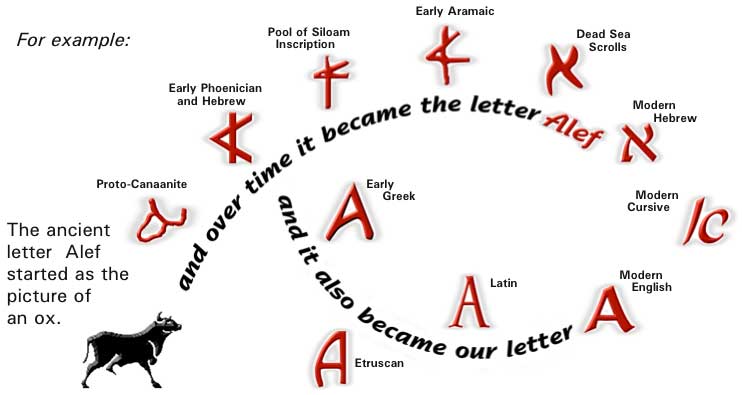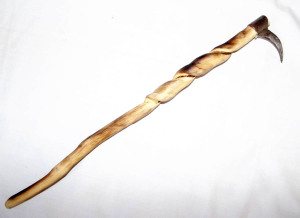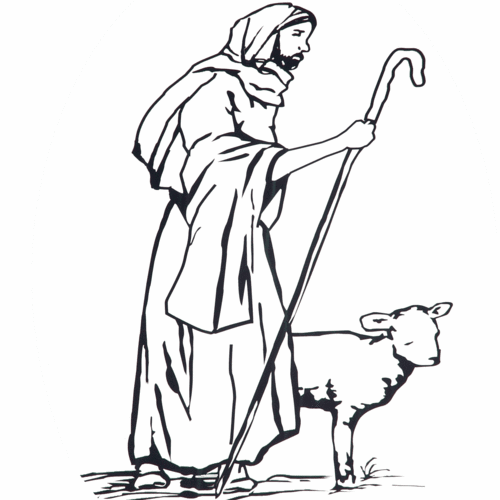- Aug 1, 2007
- 37
- 2
- Country
- United States
- Gender
- Male
- Faith
- Eastern Orthodox
- Marital Status
- Single
- Politics
- US-Green
Early writing systems like ancient Akkadian, Sumerian, Egyptian, and Chinese began by using pictures or logograms for words. For the Akkadians, the word for God, "El"or "Ilu" in cuneiform, was written with an eight-legged star symbol that also signified the heavens. The Canaanites and Hebrews used a phonetic script - the Phoenician alphabet - that began with pictures, so that each letter was drawn in the form of something related to the name the letter. So for example, the alphabet began with the letter "Aleph" that was drawn like an ox's head. The word "aleph" in Hebrew commonly means cattle or oxen. According to a theory by Jeff Benner, the meaning of some words can be related to the meaning of the individual letters making up the words. I am skeptical of his theory, but am open to considering whether it might be true in the case of a few words. Does this apply to the name for God, "El"?
One of the common associations for the Canaanite and Levantine god "El" was the bull, and this association also shows up in Biblical episodes:
But was the bull by itself ever a written symbol for "God", "El", in the same way that 1 in English is a symbol for one, & is a symbol for "and", the Akkadians used a star to represent God and the heavens?
The first letter of the ancient Hebrew alphabet, before the Israelites took the Assyrian script, was "Aleph", in the shape of a bull's skull. In the 2007 book Letter by Letter: An Alphabetical Miscellany, Laurent Pflughaupt writes: "The first pictograms that evolved into the first Phoenician letter ALEPH and eventually our letter A had the form of a bull or an ox. Drawn rather realistically, the animal was represented either in its entirety or simply by the outline of its head: In the Proto-Sinaitic alphabet, around 1700 BCE, appeared in this form."
This idea has been around a long time in academia. In the 1898 book The Hittites and Their Language, Claude Reignier Conder wrote: "We find, for instance, that a or av was the old Mongol word for "bull," and the bull's head is the very evident origin of the letter called Aleph (bull), whence our A is derived".
This raises the question for me of whether the Aleph was ever drawn by itself as a symbol for God. In Letter Perfect: The Marvelous History of Our Alphabet From A to Z, David Sacks writes:
Further, absent any findings that an Aleph by itself could be a written symbol in writing for God, El, could the combination of the names or pictures of the two letters that make up "El" in Hebrew (Aleph and Lamed) have a special meaning known to the Hebrews?
According to scholars, the letter Lamed was drawn like the picture of an ox goad, L , and "Malmad" was the word for Ox-goad, "malmad" being derived from the Hebrew word "Lamed", meaning "teach" or "learn" in English.
But it's hard for me to see what combination "bull" or "ox"(aleph) would make with ox-goad or teach in order to have a new meaning related to God (El) in some way. The word "El" also can mean strength or power in Hebrew, and not just "God". I guess that an ox pushed by an ox goad could represent strength, but the pictures don't look like a direct allusion to God.
I have also heard a claim that the L (Lamed) could look like a staff, which would make more sense as a reference to God, who has shepherd-like spiritual qualities. But I found very little from real scholars themselves proving this theory conencting to Lamed to a staff in academic publications. Hebrew letters were named after things that their sounds and pictures were associated with, and the word for staff (Shebet) in Hebrew is very different from the word "Lamed" and doesn't have an L. Plus, a staff has its crook at the top like a r , whereas the Lamed has its crook at the bottom like a L.
Doug Petrovich writes his proposal of the theory connecting Lamed to a Staff by associating the Lamed with an Egyptian letter that looks like a staff:
Unfortunately, Petrovich's connections between Lamed and the Egyptian staff letter seem to be too speculative for me. The Egyptian staff letter was not pronounced as an L, but as an "awt", hqa, or heqat sound. (SEE: https://commons.wikimedia.org/wiki/Category:Crook_(hieroglyph))
The Hebrew word "L" means "toward" (see http://www.ancient-hebrew.org/alphabet_letters_lamed.html ) and this meaning matches up with the idea of an ox-goad in a way, since a goad makes something move toward something else. So it seems more that the idea of Lamad was a goad than a staff.
One of the common associations for the Canaanite and Levantine god "El" was the bull, and this association also shows up in Biblical episodes:
http://www.atkinslightquest.com/Documents/Religion/Hebrew-Myths/Worship-of-Yahweh-as-a-Bull.htmAs for ancient Near Eastern deities, they were characteristically horned. From the time of Sumer down to the eclipse of the Ugaritic pantheon, the heads of divinities bore the horns of either bulls or rams.
...
It was explicitly stated in the Book of Numbers that God (Elohim) had “the horns of the wild ox” (24:8 RSV).*** And His throne was guarded by human-headed bulls called cherubim. In fact, bulls were set up as golden images of Yahweh in the two rival temples of the ten northern tribes of Israel (1 Ki. 12:28-29).
...the Zondervan Bible Dictionary [says]
The historian Will Durant has elaborated further:
- Aaron made a golden image of a male calf in order that the people might worship Jehovah under this form (Exod. 32:4). ... The feast held in connection with this worship was “a feast of Jehovah” (Exod. 32:5). After the division of the kingdom, Jeroboam set up two golden calves in his kingdom, one at Bethel and one at Dan (1 Ki. 12:29) because he feared that his people might desert him if they continued to worship in Jerusalem. He was not trying to make heathenism the state religion, for the bull images were undoubtedly supposed to represent Jehovah. In time, these images, at first recognized as symbols, came to be regarded as common idols (1 Kings 12:30, Hosea 12:11).
"Moses could never quite win his flock from the adoration of the Golden Calf, for the Egyptian worship of the bull was still fresh in their memories, and Yahweh was for a long time symbolized in that ferocious vegetarian.*"
The archæologist William F. Albright confirmed this view.
- ...the erection of a “golden calf” at Dan...refers to an attempted return by the Israelites of Moses’ time to the ancient practice of representing the chief divinity in the form of a storm-god standing on a young bull...though we do not know whether or not the figure of the god standing on the young bull was supposed to be visible or invisible. The latter was true later. In view of the archaism of Exodus 32 and Jeroboam’s obvious intention, over 350 years later, to restore pre-Solomonic faith and practice rather than to create a new paganism, it is much safer to assume that the Israelites did not erect a visible image (of Yahweh atop the bull) at either Bethel or Dan.*
But was the bull by itself ever a written symbol for "God", "El", in the same way that 1 in English is a symbol for one, & is a symbol for "and", the Akkadians used a star to represent God and the heavens?
The first letter of the ancient Hebrew alphabet, before the Israelites took the Assyrian script, was "Aleph", in the shape of a bull's skull. In the 2007 book Letter by Letter: An Alphabetical Miscellany, Laurent Pflughaupt writes: "The first pictograms that evolved into the first Phoenician letter ALEPH and eventually our letter A had the form of a bull or an ox. Drawn rather realistically, the animal was represented either in its entirety or simply by the outline of its head: In the Proto-Sinaitic alphabet, around 1700 BCE, appeared in this form."
This idea has been around a long time in academia. In the 1898 book The Hittites and Their Language, Claude Reignier Conder wrote: "We find, for instance, that a or av was the old Mongol word for "bull," and the bull's head is the very evident origin of the letter called Aleph (bull), whence our A is derived".
This raises the question for me of whether the Aleph was ever drawn by itself as a symbol for God. In Letter Perfect: The Marvelous History of Our Alphabet From A to Z, David Sacks writes:
The word "Aleph" developed into the Hebrew word for chief, "Aluph". Aleph is also special as the first letter of the alphabet, recalling how God is a first cause. I don't think that this answers to question, but it suggests a possible answer. I think that the Aleph could in fact have started the alphabet in reference to its association with the sacred bull, since the aleph bull's head was a symbol for El or God."How and why aleph was chosen for first place, we will never know. No modern explanation satisfies—especially not references to the sacredness of the bull in ancient Mediterranean and Near Eastern cultures. ...According to mystical writings such as the medieval European compilation called the Kabbalah... alef symbolizes the divine energy that preceded and initiated Creation. The seeding power existed before any other form could be realized which is why the opening word of the Hebrew Bible bereshith (in the beginning) starts with the Hebrew alphabet's second letter, for the first."
Further, absent any findings that an Aleph by itself could be a written symbol in writing for God, El, could the combination of the names or pictures of the two letters that make up "El" in Hebrew (Aleph and Lamed) have a special meaning known to the Hebrews?
According to scholars, the letter Lamed was drawn like the picture of an ox goad, L , and "Malmad" was the word for Ox-goad, "malmad" being derived from the Hebrew word "Lamed", meaning "teach" or "learn" in English.
But it's hard for me to see what combination "bull" or "ox"(aleph) would make with ox-goad or teach in order to have a new meaning related to God (El) in some way. The word "El" also can mean strength or power in Hebrew, and not just "God". I guess that an ox pushed by an ox goad could represent strength, but the pictures don't look like a direct allusion to God.
I have also heard a claim that the L (Lamed) could look like a staff, which would make more sense as a reference to God, who has shepherd-like spiritual qualities. But I found very little from real scholars themselves proving this theory conencting to Lamed to a staff in academic publications. Hebrew letters were named after things that their sounds and pictures were associated with, and the word for staff (Shebet) in Hebrew is very different from the word "Lamed" and doesn't have an L. Plus, a staff has its crook at the top like a r , whereas the Lamed has its crook at the bottom like a L.
Doug Petrovich writes his proposal of the theory connecting Lamed to a Staff by associating the Lamed with an Egyptian letter that looks like a staff:
http://www.biblearchaeology.org/post/2013/07/25/New-Find-Jerusalems-Oldest-Hebrew-Inscription.aspxThe Hebrew lamed derives from the Middle Egyptian hieroglyph S39 in the standard hieroglyphic Sign List (hereafter ‘S.L.’), which depicts a shepherd’s crook/staff (Fig. 4).
[SEE CHART AT LINK]

The third letter lamed depicts a shepherd’s staff, known as a crook, and derives from the Egyptian staff/crook hieroglyph (S39 in S.L.; Fig. 4). The Canaanite syllabary contains no such grapheme for the l-sound, or any other sound. Instead, the Canaanites used a drawing of the sky with a sickle suspended from it to represent the la- syllabic (Fig. 5a), which is based on the word for “night” (laylu). Seemingly, Canaanite borrowed from the Egyptian glyph for “night” (N2 in S.L.; Fig. 4), which depicts the sky with a w3s-scepter suspended from it.
The Egyptian language presents no such trouble for the derivation of the lamed-staff as Canaanite does. The hieroglyphic S39 staff was used interchangeably with the S38 staff, which featured a far more curved handle, to denote “flocks” (‘wt) of animals such as sheep and goats, though it also could be used alone to represent the word for “scepter” (ḥq3t).
The connection of Egyptian as a source language for Hebrew is strengthened by Hebrew’s borrowing of the Egyptian glyph to represent its own letter l, since the Hebrew name for the instrument used to goad animals along was a lmd (Judg 3:31), despite the superfluous m at the beginning of dm'l.m; (“oxgoad”), due to mimation.
Unfortunately, Petrovich's connections between Lamed and the Egyptian staff letter seem to be too speculative for me. The Egyptian staff letter was not pronounced as an L, but as an "awt", hqa, or heqat sound. (SEE: https://commons.wikimedia.org/wiki/Category:Crook_(hieroglyph))
The Hebrew word "L" means "toward" (see http://www.ancient-hebrew.org/alphabet_letters_lamed.html ) and this meaning matches up with the idea of an ox-goad in a way, since a goad makes something move toward something else. So it seems more that the idea of Lamad was a goad than a staff.









